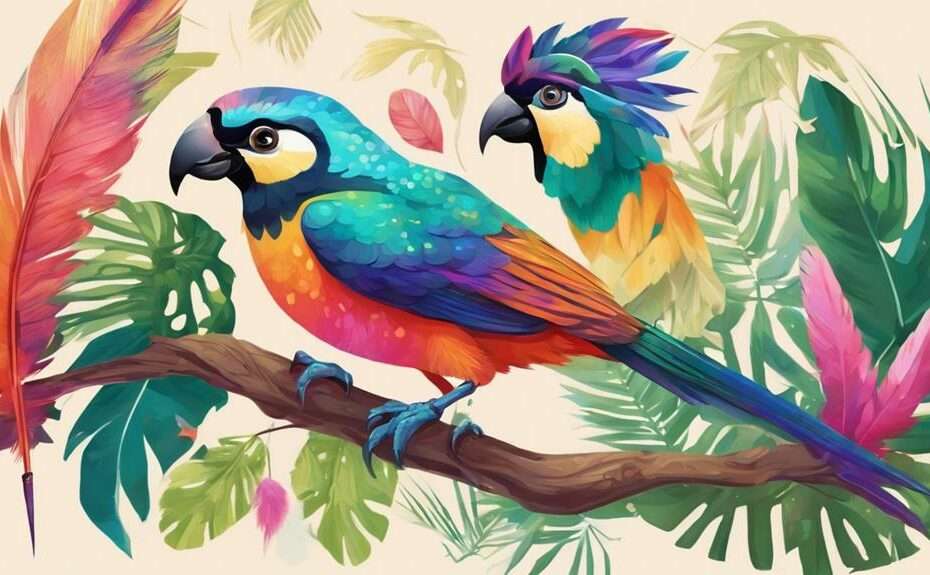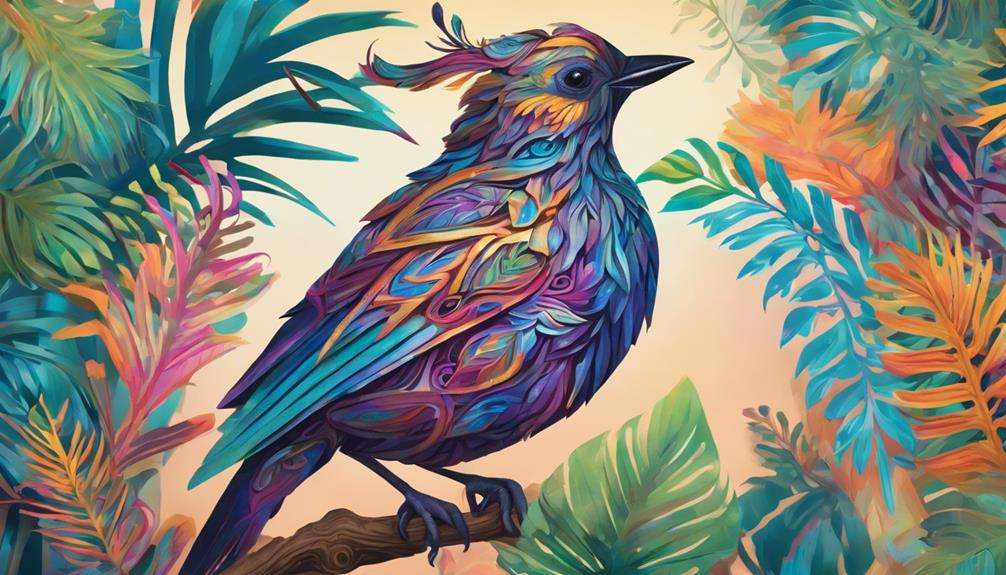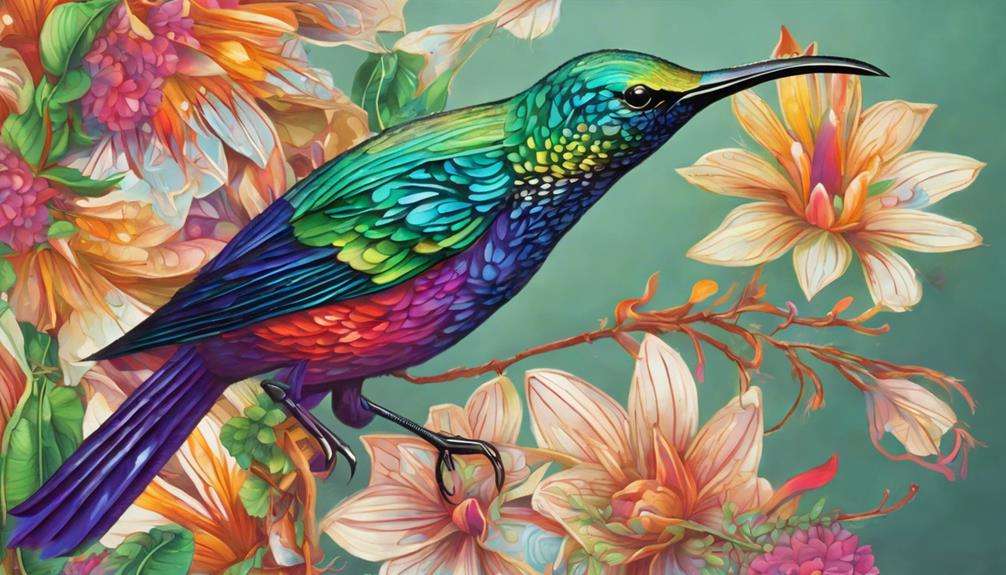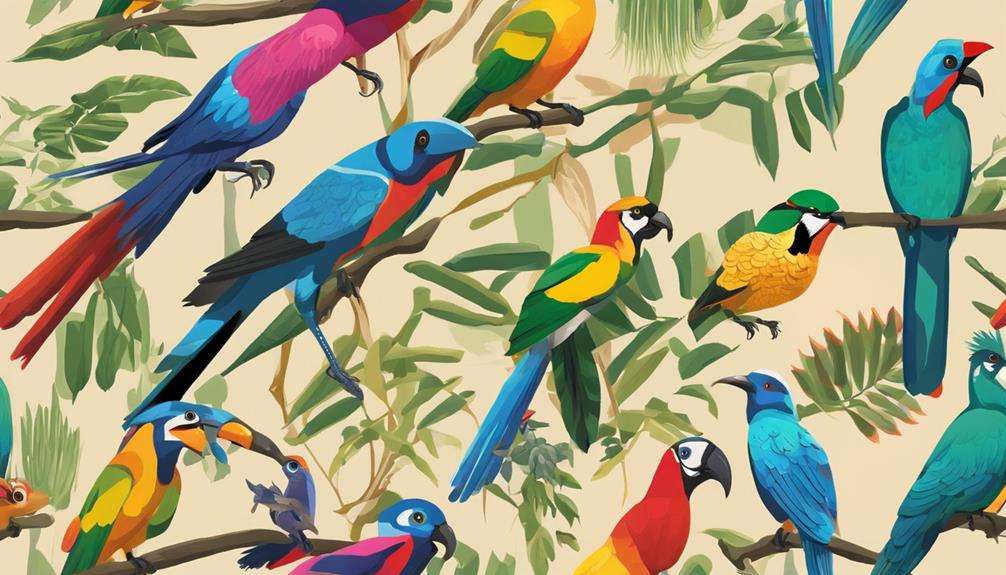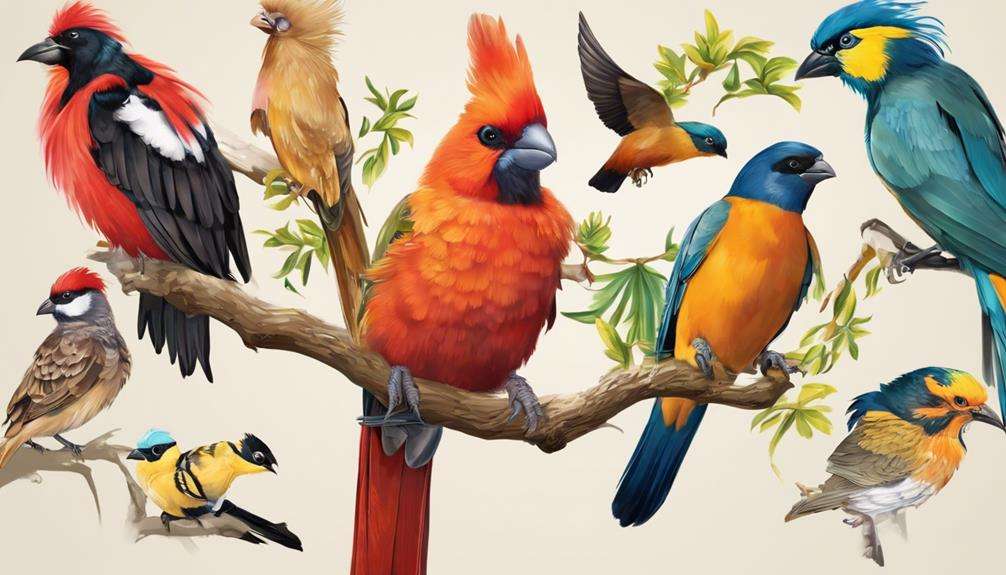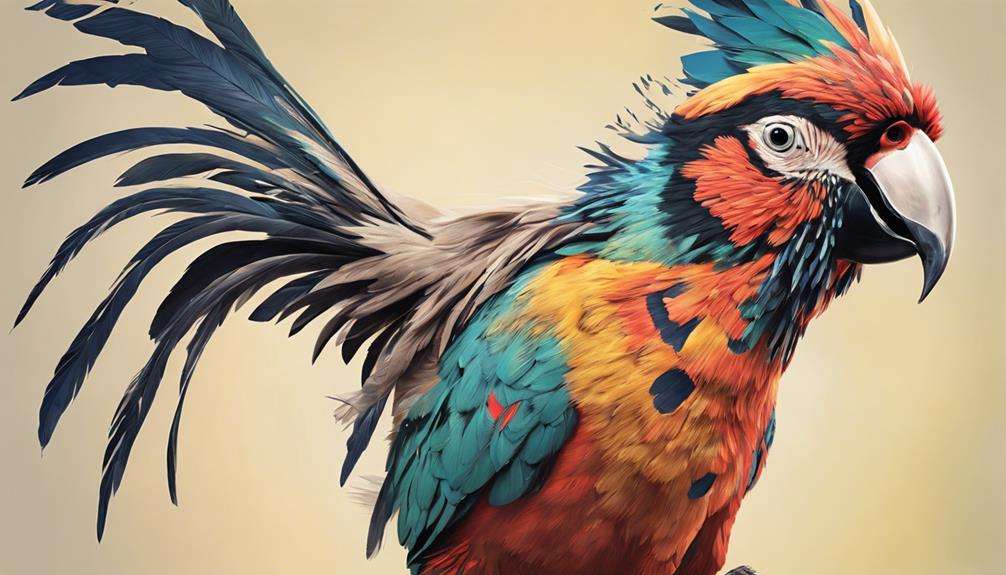Have you ever wondered about the untold stories of rare avian species that exist in the far corners of the world? These uncommon birds hold secrets waiting to be disclosed, intriguing both scientists and enthusiasts alike.
Exploring their unique physical traits, habitats, and behaviors can provide a deeper understanding of the intricate tapestry of nature. Join us on a journey to uncover the mysteries of these extraordinary avian creatures, and you might just find yourself captivated by the fascinating world that lies beyond the ordinary.
Key Takeaways
- Rare avian species offer insights into evolution and biodiversity.
- Uncommon habitats and distributions shape specialized adaptations.
- Conservation efforts are crucial for protecting rare bird species.
- Understanding behaviors and habitats aids in tailored conservation strategies.
Rare Avian Species Overview
Rare avian species, characterized by their distinctive physical features and behaviors, are a subject of critical concern due to the threats of habitat loss and hunting. These uncommon birds, such as the Kakapo and Philippine Eagle, face critical endangerment, emphasizing the importance of conservation efforts. Species like the Christmas Island Frigatebird and Kagu are important for biodiversity, contributing to the uniqueness of global ecosystems. By studying rare avian species, valuable insights into evolutionary adaptations and habitat conservation can be gained.
Understanding the plight of rare avian species underscores the necessity for habitat conservation and protection. The loss of their habitats not only endangers these unique creatures but also disrupts the delicate balance of ecosystems they inhabit. Conservation efforts play a crucial role in safeguarding these birds and the environments they rely on for survival. Through concerted actions, we can ensure the preservation of these extraordinary species for future generations.
Unique Physical Characteristics of Rare Birds
Exhibiting remarkable adaptations for survival, rare avian species showcase an array of unique physical characteristics that distinguish them from more common bird species.
The Kakapo, a flightless parrot from New Zealand, stands out as the heaviest parrot globally. Shoebills, renowned for their massive bills, exhibit a patient hunting style in the marshy regions of Africa. In South America, the Hoatzin boasts a unique digestive system that efficiently breaks down leaves. Unfortunately, the critically endangered Philippine Eagle, one of the largest eagle species, faces threats from habitat loss and hunting activities. Secretary Birds in Africa have elongated necks and legs, aiding in their efficient hunting techniques in grasslands.
These rare avian species not only captivate with their physical attributes but also serve as a reminder of the delicate balance between survival and extinction in the natural world.
Uncommon Habitats and Distributions
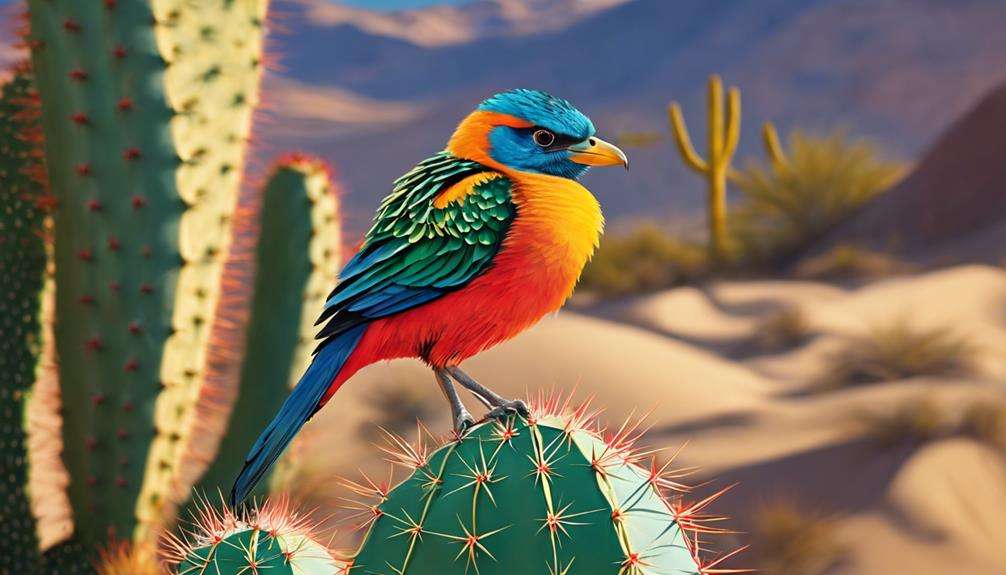
Uncommon avian species have adapted to thrive in a diverse range of habitats, from remote islands to high-altitude mountains, showcasing their specialized adaptations for survival. These rare birds often occupy unique habitats such as dense jungles, deserts, polar regions, and deep oceanic areas. Their restricted distributions are a result of their specialized adaptations, making them found only in specific regions or ecosystems. The distribution patterns of uncommon avian species provide valuable insights into their evolutionary history, ecological niche, and environmental requirements.
Conservation efforts for these rare birds primarily focus on preserving their specialized habitats and addressing threats to these unique ecosystems. Human activities, climate change, and habitat destruction pose significant challenges to the survival of uncommon avian species. By understanding their distribution patterns, conservationists can better tailor strategies to protect these birds and their habitats. It's essential to raise awareness about the importance of conserving these specialized habitats to guarantee the continued existence of these fascinating avian species.
Fascinating Behaviors of Rare Avian Species
Showcasing remarkable adaptations and behaviors, rare avian species captivate with their intriguing actions and unique characteristics.
The flightless Kakapo parrot from New Zealand engages in 'lekking' behavior, where males gather to compete for mates in a distinctive courtship ritual.
In South America, the Hoatzin stands out with its unique digestive system that ferments food in its crop, emitting a leafy odor.
Across the plains of Africa, the Secretary Bird displays powerful legs, using them to stomp on prey to kill them before consumption.
The Philippine Eagle, one of the largest and rarest eagles globally, exhibits strong territorial behaviors to safeguard its nesting sites.
Lastly, the Christmas Island Frigatebird mesmerizes with elaborate courtship displays, involving the inflation of its bright red throat pouch to attract potential mates.
These rare avian species offer a window into the diverse and captivating world of fascinating avian behaviors.
Conservation Efforts for Uncommon Birds
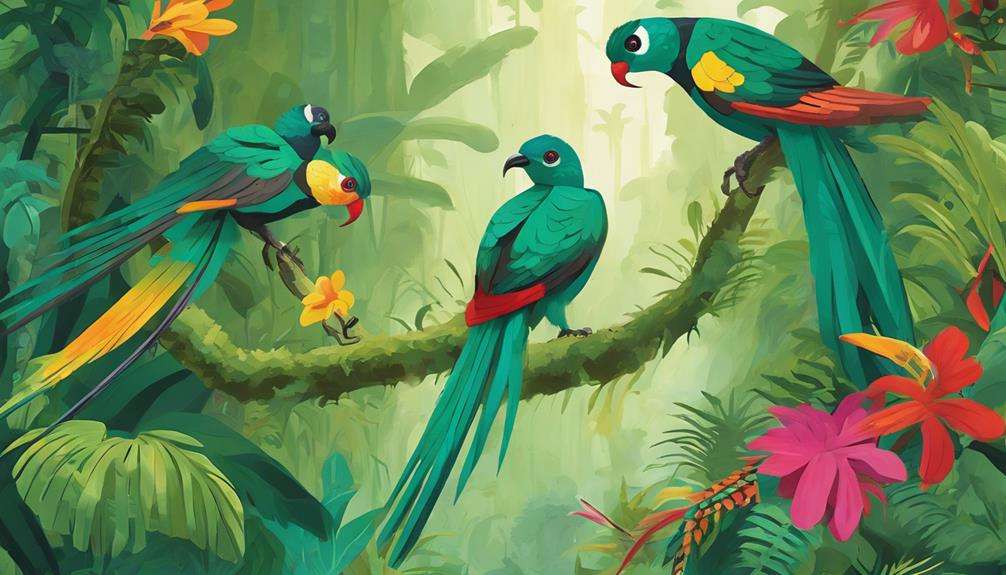
Efforts to conserve uncommon birds like the Kakapo primarily focus on protecting their habitats and controlling predators to guarantee their survival. Organizations such as the World Parrot Trust and BirdLife International are actively involved in researching and advocating for the conservation of rare bird species.
These birds face threats from habitat destruction, climate change, and illegal wildlife trade, necessitating conservation actions to safeguard their populations. The IUCN Red List plays a pivotal role in identifying the conservation status of rare bird species, guiding targeted conservation strategies and monitoring their population trends.
Collaborative efforts involving governments, conservation groups, and local communities are essential in protecting uncommon bird species and their habitats. By addressing issues such as habitat loss and invasive predators, conservation initiatives aim to assure the long-term survival of these unique avian species and promote biodiversity conservation on a global scale.
Frequently Asked Questions
What Is the Number 1 Rarest Bird in the World?
The Spix's Macaw holds the title of the number 1 rarest bird globally. Habitat loss and trapping have pushed them to critical endangerment. Conservation efforts, like breeding programs, aim to save the few remaining individuals and restore their habitats.
What Is the Rarest Bird in the Usa?
You might be surprised to learn that the rarest bird in the USA is the California Condor. Once on the brink of extinction, conservation efforts have helped increase their population, making birdwatching opportunities more exciting.
What Is the Most Unique Bird in the World?
The Kakapo stands out as the most unique bird globally due to its exotic plumage, unusual behaviors, and distinctive calls. Rare sightings of this endangered species showcase its special adaptations, fascinating courtship, and intriguing migration patterns.
What Is the Mysterious Bird in the World?
The Kakapo is a rare and mysterious bird, known for its cryptic behavior and unusual plumage. Rare sightings in remote locations make studying their enigmatic calls and intriguing adaptations a challenge in unexplored territories.
Conclusion
As you reflect on the extraordinary world of uncommon avian species, you're struck by the delicate balance between their unique physical characteristics and the challenges they face in their uncommon habitats.
Observing their fascinating behaviors and the conservation efforts aimed at protecting them, you're reminded of the importance of preserving the diversity of avian life for future generations to marvel at.
Embrace the wonder of these rare birds and join in their conservation journey.
